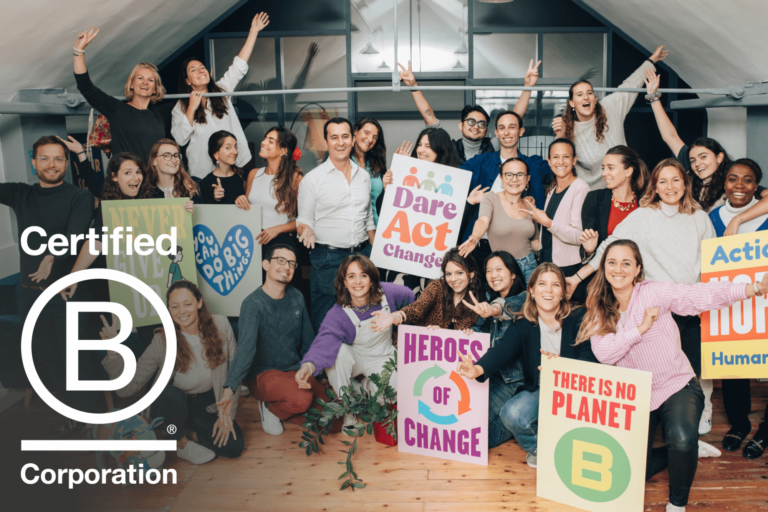Every year, the amount of funds allocated to projects that accelerate the environmental and social transition grows. Despite this promising trend, the financing gap to achieve the Sustainable Development Goals (SDGs) remains substantial, estimated at USD 3.9 trillion in 2020 [1]. One of the reasons for this gap is that private investment in emerging markets falls short of expectations. These markets are frequently seen by private investors as low-return, high-risk, and lacking in innovation and oversight.
However, as crises increasingly overlap, it is essential that we coordinate our response to make the greatest impact. One key takeaway from our involvement at UNCCD COP16 in Riyadh was the power that lies in public-private collaboration. For investors, this often means turning to blended finance to co-fund projects with both private and public actors.
What is blended finance?
In emerging markets, development financial institutions (DFIs) and multilateral development banks (MDBs) are the first to invest in early-stage ventures through grants or subsidies. These investments rarely yield returns since their primary goal is to encourage development. However, public institutions and banks can also attract private investors to co-fund projects, creating more sustainable investments and allowing for large-scale development.
These blended finance initiatives take various forms, with two common approaches being:
- Governments investing in private venture capital (VC) funds or establishing their own VC funds.
- Governments supporting private-sector funds through tax incentives, equity guarantees, or direct subsidies to reduce costs, risks, and uncertainties.
More recently, co-investment funds have started gaining traction. They represent a shift from direct government intervention towards greater private-sector involvement. They pool investments from public institutions, private actors, or business angels into a common fund managed independently by venture capitalists, public authorities, private equity groups, or even business angels. This type of structure allows for a more efficient allocation of resources and reduced costs.
The advantages of blended finance
Blended finance maximizes impact and stabilizes investments over time. By aligning these public-private investments with global targets, it draws funding toward projects that align with national priorities, reducing aid fragmentation and attracting concessional financing. This approach also helps reduce costs while meeting both international standards and local requirements.[2]

Collaboration between public and private actors increases the likelihood of successfully replicating and scaling projects. Partners can leverage each other’s strengths, networks, and expertise. For multifaceted challenges, blended finance helps address various projects simultaneously, accelerating change on a larger scale. Under unified programs, complex issues involving multiple sectors can be resolved simultaneously, increasing total efficiency.
Blended finance also supports sustainable development over the long term. Public-sector actors can still fund initiatives after private investors exit, while governments and regional institutions can implement measures to strengthen local ecosystems and markets.
Since the financial crisis—and even more so since the COVID-19 pandemic—it has become harder for early-stage markets to grow [3]. Regional disparities have widened, with core economic hubs receiving the majority of financing while others lag behind. Blended finance helps narrow down these inequalities by encouraging investment in regions perceived as higher-risk. It bridges the capital gap resulting from private investors’ hesitance, providing an alternative—or complement—to business angels for sustainable start-up development.
Rebuilding trust and meeting the right partners

The private sector’s involvement is not just beneficial, it is essential for sustainable development. However, it can be difficult for MDBs and DFIs to locate co-investors who value sustainability and impact investing, as private companies sometimes have negative environmental or social impacts.
Private investors, on the other hand, frequently steer clear of blended finance out of concern for financial loss or lack of transparency. Trust between the public and private sectors has been strained and needs to be restored.
There are many actions public institutions can take to help rebuild this trust, including:
- Supporting a robust and diverse domestic private sector instead of focusing solely on attracting foreign investors, who may be less committed to local development in the long run
- Avoiding sectors where private investors are already involved, and prioritize areas with the highest sustainable returns for maximum added value.
- Focusing on projects that prioritize the environmental and social transition over purely commercial returns, thus encouraging private investors to target areas most in need of investment.
- Improving evaluation, monitoring, and transparency to minimize perceived risks for private investors exploring new sectors.
Private investors can partner with trusted institutions, and actively manage funds to further reduce risks. At ChangeNOW, they can discover innovative solutions and check our dealflow to make sure that their investment fits their needs. They can also build valuable connections with potential investment partners through networking sessions and a curated finance-focused program.
Whether you are a public actor (DFI, MDB, institution, etc.) looking for private co-investors, or a private actor (VC, fund, BA, etc.) trying to get public support for your sustainable investments, ChangeNOW is the place to meet your next partner! Join us at ChangeNOW 2025 to find and start building impactful blended finance strategies.
[1] Global Outlook on Financing for Sustainable Development 2023, OECD: https://www.oecd.org/en/publications/global-outlook-on-financing-for-sustainable-development-2023_fcbe6ce9-en.html
[2] Scaling Up Co-Financing for Greater Development Impact, World Bank: https://www.worldbank.org/en/news/feature/2024/04/23/scaling-up-co-financing-for-greater-development-impact
[3] Financing SMEs and Entrepreneurs: An OECD Scoreboard. Special edition: The impact of COVID-19, OECD: https://www.oecd.org/en/publications/financing-smes-and-entrepreneurship-an-oecd-scoreboard_ecd81a65-en.html






